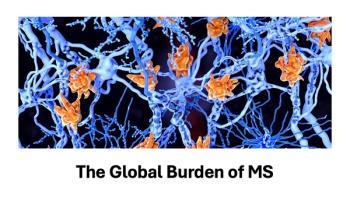
Payers must lead data integration efforts
As new payment arrangements take shape, be prepared to integrate data from providers
After years of starts and stops, political battles and industry debates, a future in which healthcare data is easily shared by payers, providers and patients is on the horizon. The benefits of such a future are expected to reach well beyond the primary goal of improving healthcare quality.
“Healthcare is on the cusp of transformation, and technology is playing a significant role,” says Phil Fasano, executive vice president and CIO of Kaiser Permanente. “New technologies will radically change the future of healthcare and drive medical breakthroughs by making it easier to share information rapidly across the world, across care providers and patients.”
Generally described as “big data,” this culmination and stratification of information could provide new opportunities in population health programs, as well as best practices in delivering and paying for care. Right now, insurers appear to be in the best position to leverage information thanks to their experience in collecting claims data.
“For the now and the near future, payers have the best data collection resources that provide insight into health,” says John Edwards, director in the US Healthcare Strategy Practice of business advisory firm PwC. The firm published a research paper titled “Advancing Healthcare Informatics” in which it outlines how healthcare data is being used and analyzed. “We found in our research that every payer already has some collection of data capabilities that they’ve used for internal purposes, such as for actuarial work or disease management programs,” Edwards continues. “They’re accustomed to data collection. Many have used it to create provider incentive programs. They’re already expanding into broader cooperation with providers.”
Innovation via Collaboration
Provider cooperation is seen as the first step in the journey toward big data. Claims data is often uniform and a process is already in place to collect and analyze it. However, it is limited in scope because its purpose is to facilitate payment transactions, not big data initiatives.
“What payers don’t have is clinical data, which would add data richness to the claims data we already have,” says Somesh Nigam, senior vice president and chief informatics officer at Independence Blue Cross (IBC) in Philadelphia. “Often we collect lab or wellness data, but not consistently. Increasingly what’s happening is large provider organizations are jointly realizing the value of their data together far exceeds the value that each brings alone.”
He says if payers can integrate EMR (electronic medical record) data with claims data, they can evaluate best practices and see what’s happening with respect to cost. Nigam says more and more providers are realizing the future of healthcare revolves around data integration. The majority of IBC’s providers are already in some kind of accountable care contract that expects them to identify and deliver quality care.
Just like payers, providers are trying to determine their role under health reform with its new payment models, he says. As more risk-sharing and shared-savings arrangements emerge, payers and providers will find they must exchange data to execute their contract arrangements.
“It’s increasing now more than ever before as people realize you have to work toward shared goals to improve quality and reduce costs, which leads to shared savings,” he says.
That’s not to say that data integration is easy. Anyone who has worked in a large company can relate to the difficulties of simply sharing information with internal departments. Those difficulties multiply exponentially when sharing data among multiple primary care physicians, hospitals, labs, pharmacies, payers and members.
It takes a deliberate effort to bring the parties together and create useful intelligence around the data, Nigam says.
“There are some providers who are very forward looking and others who are a little slow to come around. The winners will be the ones who collaborate. Patient centered care relies on it,” he says.
One of the ultimate goals in the healthcare system is to pay for quality with incentives. PwC’s Edwards says both “carrots and sticks” are being used as payers entreat providers to share clinical data. He says incentives are becoming more substantial, and payers are learning to communicate with providers before setting the requirements needed to earn the incentives.
“Physicians and hospitals would like to have an idea of how they’re going to be measured before the performance year starts,” he says. “We think it’s healthy to have collaborative discussions early; payers who do that probably face less resistance.”
He also says some payers provide initial benchmark data to their providers so they can see their current performance before the actual measurements begin. If providers receive regular progress reports, they also have the chance to improve their practices and have a better shot at earning incentives.
Making the Investment
Collecting the data is one hurdle on the way to realizing the benefits of big data, but the data is useless if not analyzed and acted upon. According to PwC’s research, 62% of executives believe data integration will provide a competitive advantage, but 58% said moving from data to insight is the challenge.
The technologies needed to collect, store and make sense of all that data require a significant upfront investment. Will that investment pay off, and if so, when?
“We’re at the early stages where we’re trying different approaches,” says Nigam. “Some investments take a long time to show results. There are some low-hanging fruit benefits already, but long range … What we do know is if we don’t make these investments, the healthcare cost and quality curve is moving in the wrong direction.”
Fasano agrees that the potential long-term gains are worth the risk. In fact, he says it would be foolish for payers not to take the lead on data integration. He points to Kaiser Permanente’s use of preventive-care services, which reduced heart disease
“Today, it is resource-intense because we have not fully adopted and optimized data analytic systems,” Fasano says. “It is a new paradigm that will rely on a comprehensive database connecting all points of the healthcare system-primary care, specialists, hospitals, laboratory and pharmacy.”
He says as large databases are developed, researchers and analysts will be able to turn clinical data into useful statistical information that can inform medical decision-making at the point of care. Leveraging the vast amounts of data available to deliver better care-however challenging-is worth the investment, he says.
Newsletter
Get the latest industry news, event updates, and more from Managed healthcare Executive.






















































